Ep. 34: BL Metamorphosis vol. 3-5 by Kaori Tsurutani
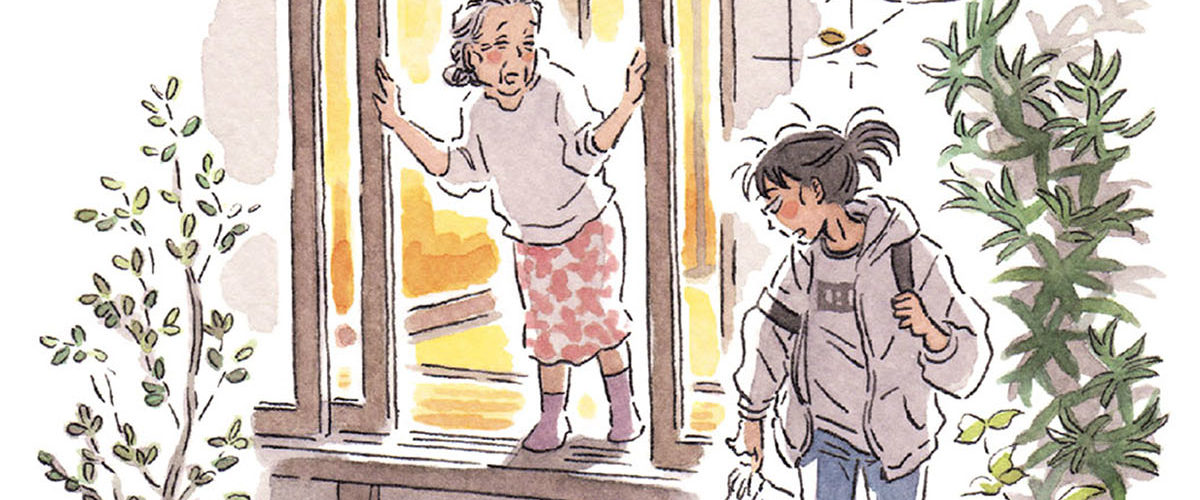
This is it, the first ever time we’ve returned to finish up a series that we loved! Kudos to Kaori Tsurutani’s BL Metamorphosis for this incredible honour. So it’s pretty clear that we liked it, but how did we like it? Why did we like it? And perhaps most importantly, will Ichinoi be okay in the end? Listen on to find out.
Powered by RedCircle
In this episode…
00:00 BL Metamorphosis Volume 3, 4, & 5
56:07 The Break!
56:30 Host Q&A: Is there a Japanese version of the Comics Code Authority?
1:14:00 Shout Outs! Dua Lipa, shojo manga, The Sopranos, and a question for the audience!
BL Metamorphosis Volumes 3, 4 & 5
By Kaori Tsurutani
Translation by Jocelyne Allen
Adapted by Ysabet Reinhardt MacFarlane
Lettering Ray Steeves
Edited by Jenn Grunigen
00:00 Before we get started: We’d like to thank the fine folks at publisher Seven Seas for providing us with a digital advance copy of volume 5 so we could record this episode on release day, and not have to power through the same day we bought it.
SPOILERS follow.
01:03 Since we’re covering volumes 3, 4, and 5 on this one, we can’t exactly do the ‘back of the book’ description, but if you’re joining us for this volume then hopefully you already know what’s up? If not, uh, well, welcome, this episode is gonna be a bit in-media-res for you. Here’s the series description from Seven Seas’ Website.
“In this heartwarming and award-winning manga, an elderly woman and a high school girl develop a beautiful friendship through their shared passion for Boys’ Love.
Ichinoi, a 75-year-old woman living a peaceful life, unwittingly buys a Boy’s Love manga one day…and is fascinated by what she finds inside. When she returns to the bookstore to buy the next volume, the high school girl working there–Urara, a seasoned BL fan–notices a budding fangirl when she sees one. When Urara offers to help Ichinoi explore this whole new world of fiction, the two dive into BL fandom together, and form an unlikely friendship along the way.
Seven Seas Website
Also, like, there’s SO MUCH info on BL, on Comitia, Comiket, and so much more, in the show notes for the previous episode. I strongly suggest that you go and read those if you need a primer/refresher, because copy-pasting a bunch of that info here seems like a bad idea to me.
02:00 They dragged it out of me. Ichinoi doesn’t die, we’re okay. She does however, make a massive change in her life and up and leaves Japan, moves overseas with her daughter and her daughter’s husband. I don’t know if I say this anywhere, but on reflection, the metamorphosis that Ichinoi undergoes is not just due to BL, but the friendship she gained with Urara. Her decision that maybe she could be someone who could live overseas with her daughter, and that she’s not too old to make this kind of momentous change. It’s a nice message, and a little subtle.
But that said, there were so, so many ominous moments in the lead up to the end that made us nervous.
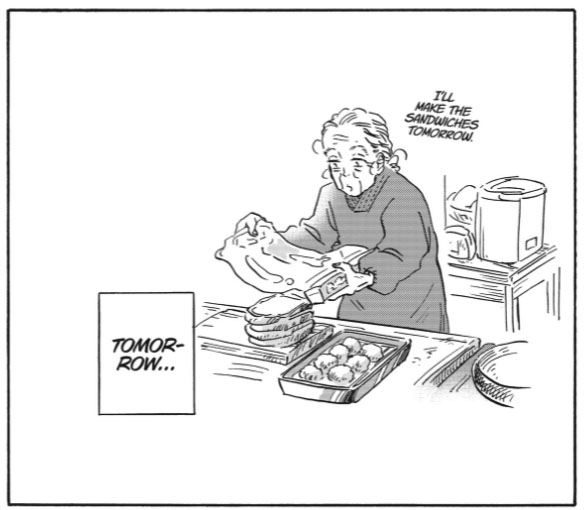
05:58 Here’s Childish Gambino’s Baby Boy, if you want a little additional audio accompaniment, since David mentioned it.
06:44 Look, we’re all really, really glad Ichinoi didn’t die. The world of BL Metamorphosis is such a nice place to spend time, having Ichinoi die after all that really would, as David says, change the tone of the series immeasurably.
07:39 Meeting up after a piece of media ends to sit and talk about it is a shared experience, for sure. In a way, this very podcast is a bit like getting together to have a cup of tea (or a beer)… But I hope that when something big like AKIRA ends on the podcast, we’re able to actually meet up in person to discuss. I miss all these people quite a bit. I’m glad I get to see Chip IRL every once in a while at least!
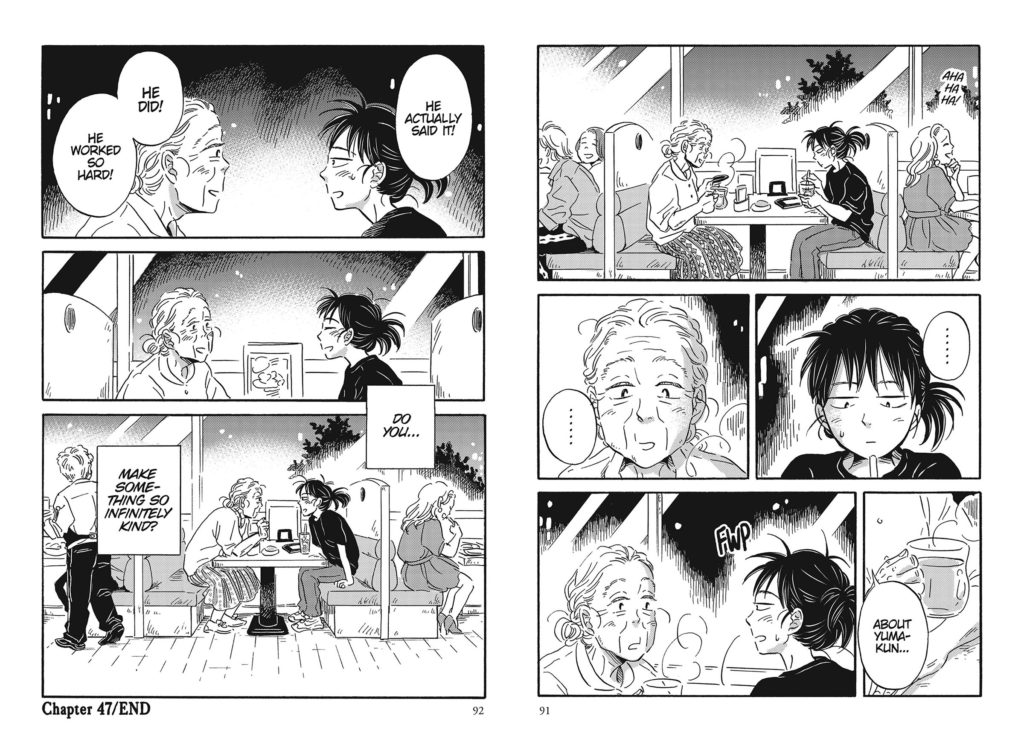
08:04 The walk to Tokyo Big Sight from the train station…. It’s quite a walk. I was just going through my old photos, and saw the walk to Tokyo Big Sight that I took all the way back in 2012, it was really quite nice.
11:00 One of the things we sort of hinted at in a previous episode, is that Comiket is a massive beast of an event. It’s the biggest comic event in the world, but Comitia is also a massive show (50k people) that can be overwhelming and filled with lots of choices too. It’s funny, all four of us on the podcast have been on the other side of the table, desperately trying to sell our own stuff to people. Luckily no one will ever see my mini-comics. 🙂
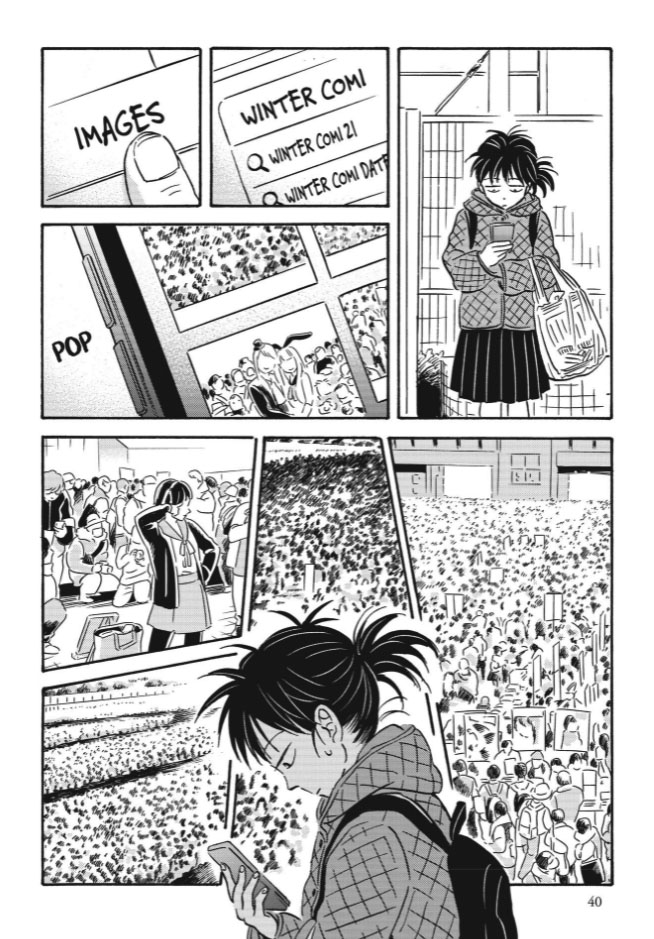
13:50 Chip Zdarsky is not and never has been real.
16:27 So I’m 99% sure that the book Chip is thinking of, where we see the lead character’s drawings and they’re deeply mediocre, is BL METAMORPHOSIS. I think it’s when Urara’s drawings were shown in volume 2. I haven’t scanned through that episode sadly, but yeah, I’m pretty sure Chip is remembering a previous volume of the book we’re reading, which is incredible. And the rest of us can’t figure out what book it was, because it was this book, and Chip presented the situation in a way that broke our brains. Delightful! All of you attentive listeners were probably like, right away, ‘Oh, wasn’t that in a previous volume of BL Metamorphosis?‘
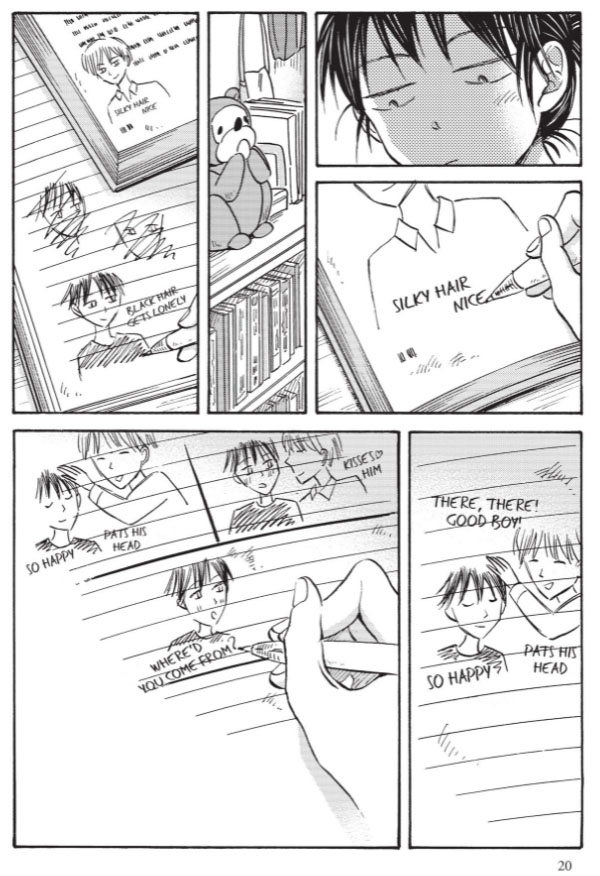
23:05 Oh, I’ll make a book and we’ll exhibit together! Does she draw?
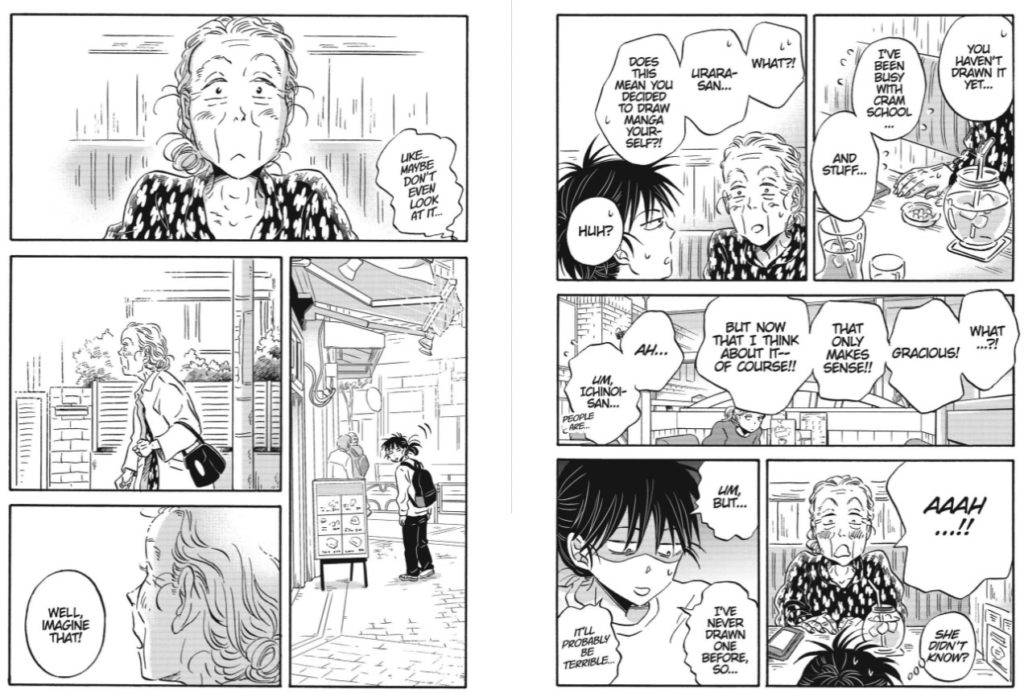
24:30 When we saw the flash-forward, “5 months later…” our hearts skipped a beat.
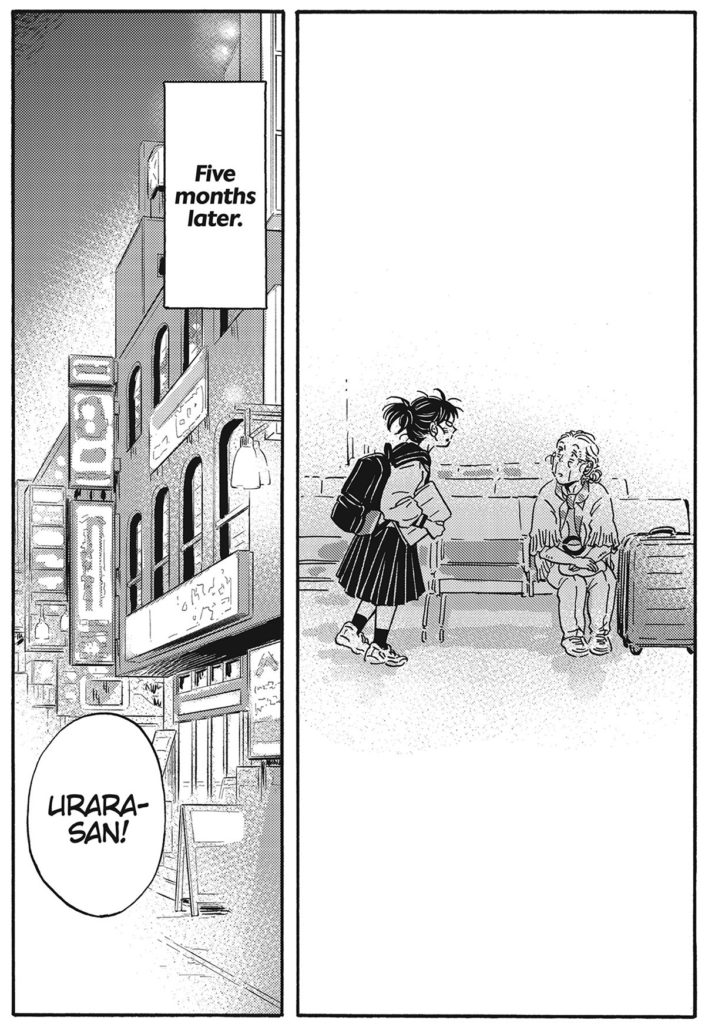
24:55 This little bit of bonus manga from volume 5 is great, revealing that some of Ichinoi’s dialogue is based on their own grandmother.
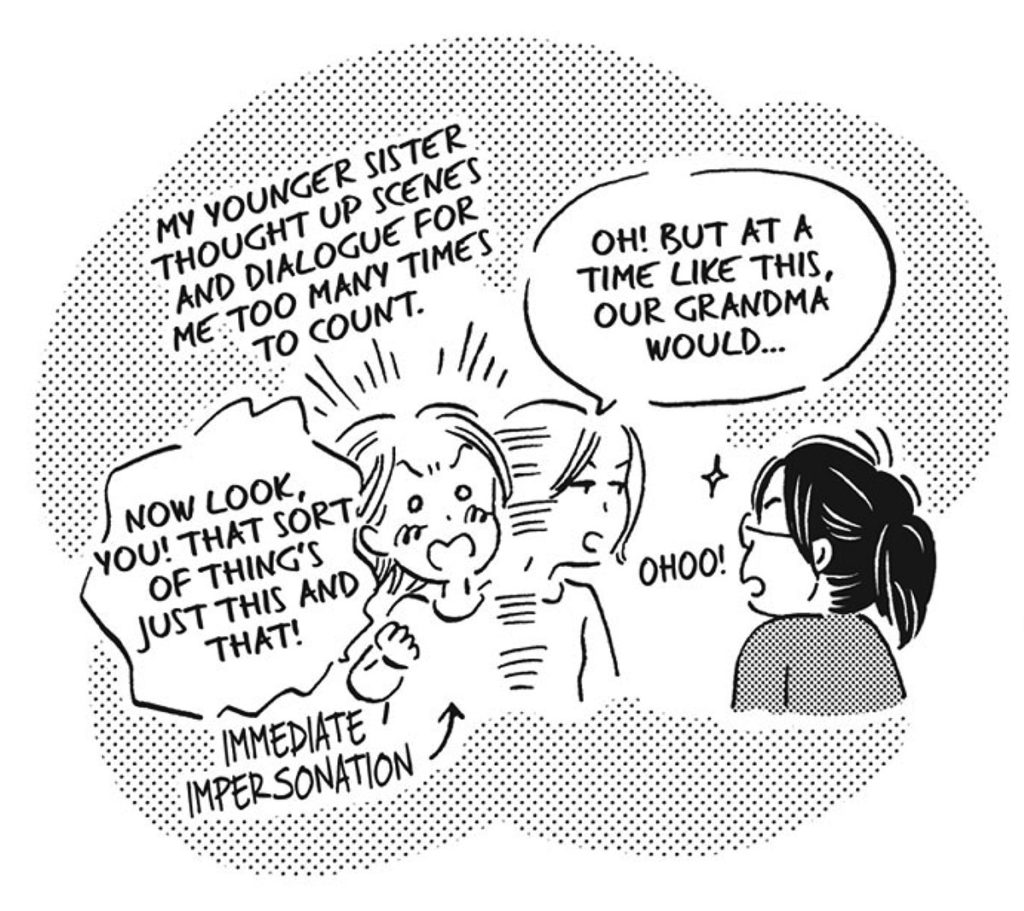
25:15 And then this bonus manga from volume 3, thanking readers for sharing stories of their own grandparents.
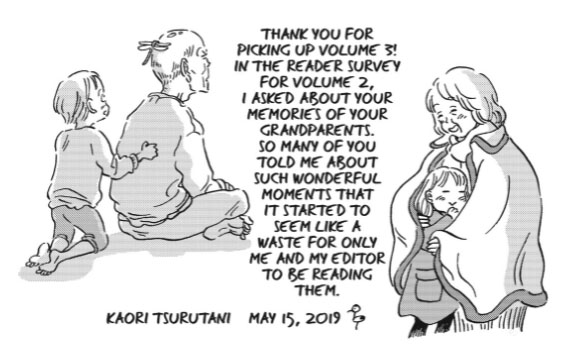
26:45 Getting a New Year’s card means that the person is still alive. That’s pretty nice.
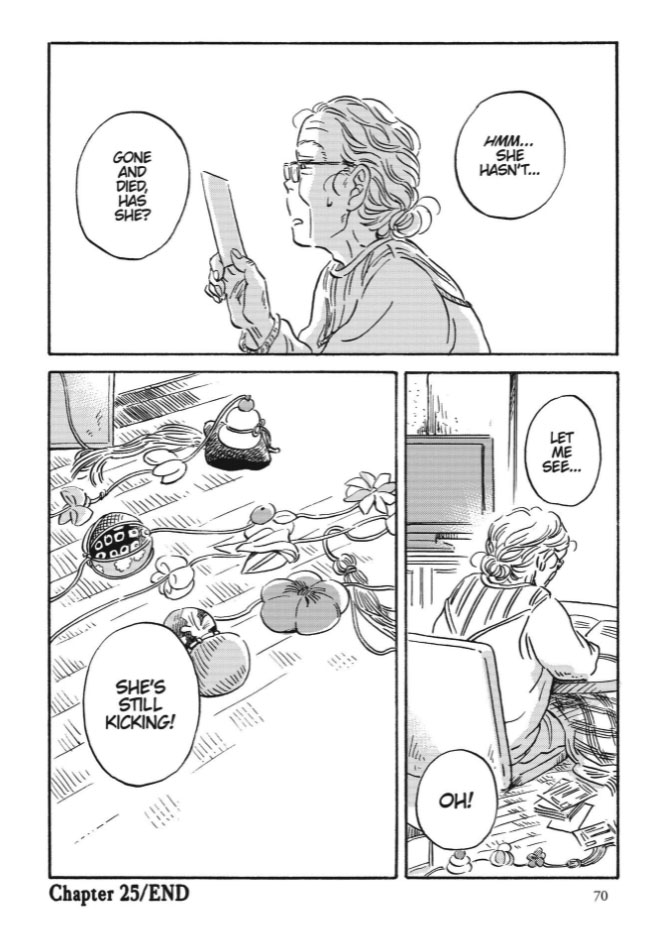
27:10 This is a pretty affecting moment in volume 3, that I feel resonates throughout the entire series. Basically, Urara is at a point in her life where it seems like everything is too big, too unknowable, and it’s all just exhausting.
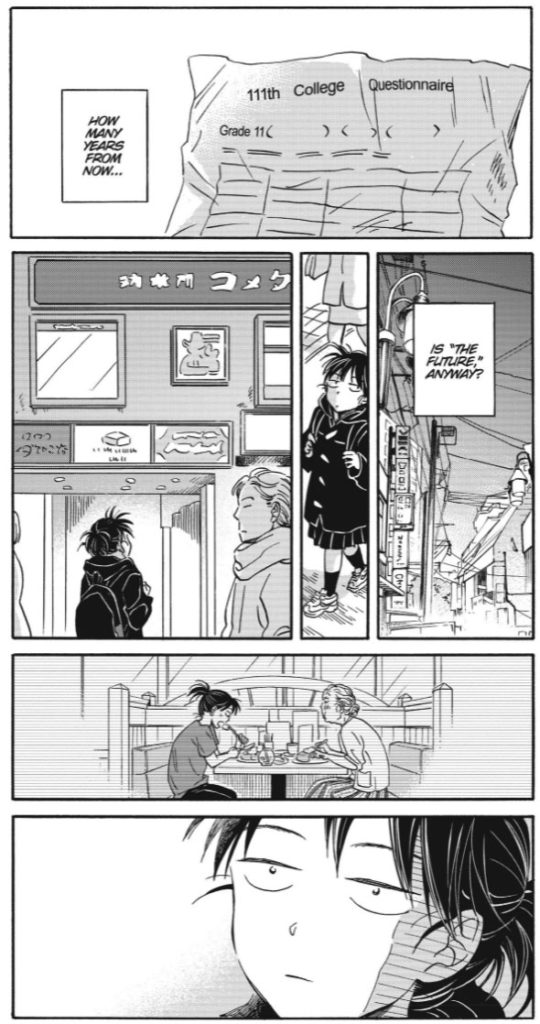
But that thought clearly intersects with Ichinoi, and how she’s lived so much longer than Urara, but seems happy and well even in old age. Urara can’t understand it — it’s too big, and feels too heavy for her.
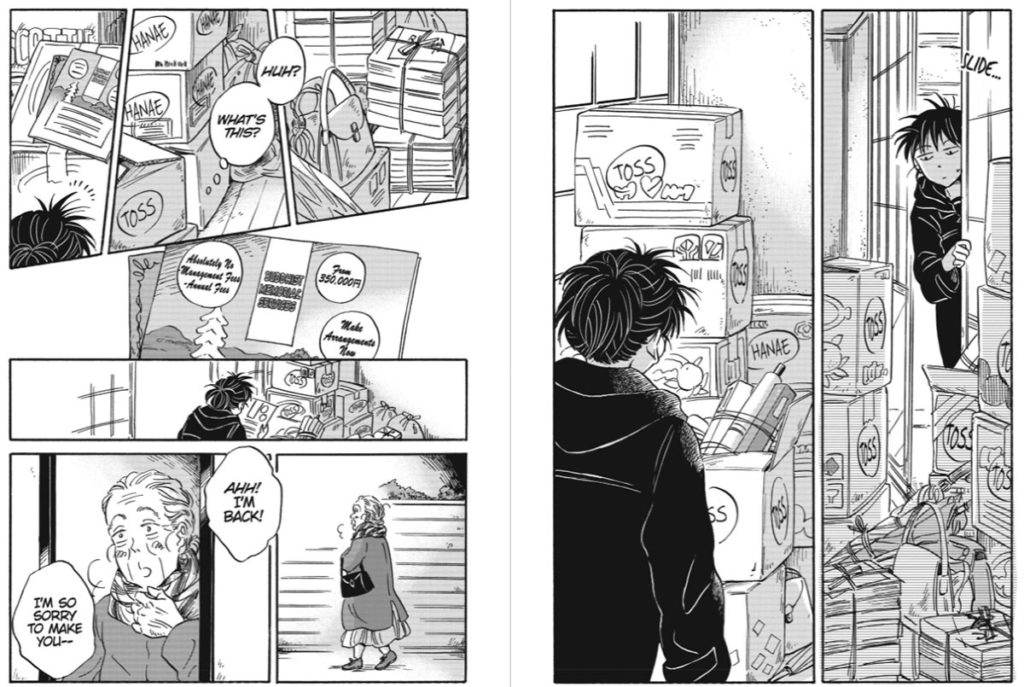
…
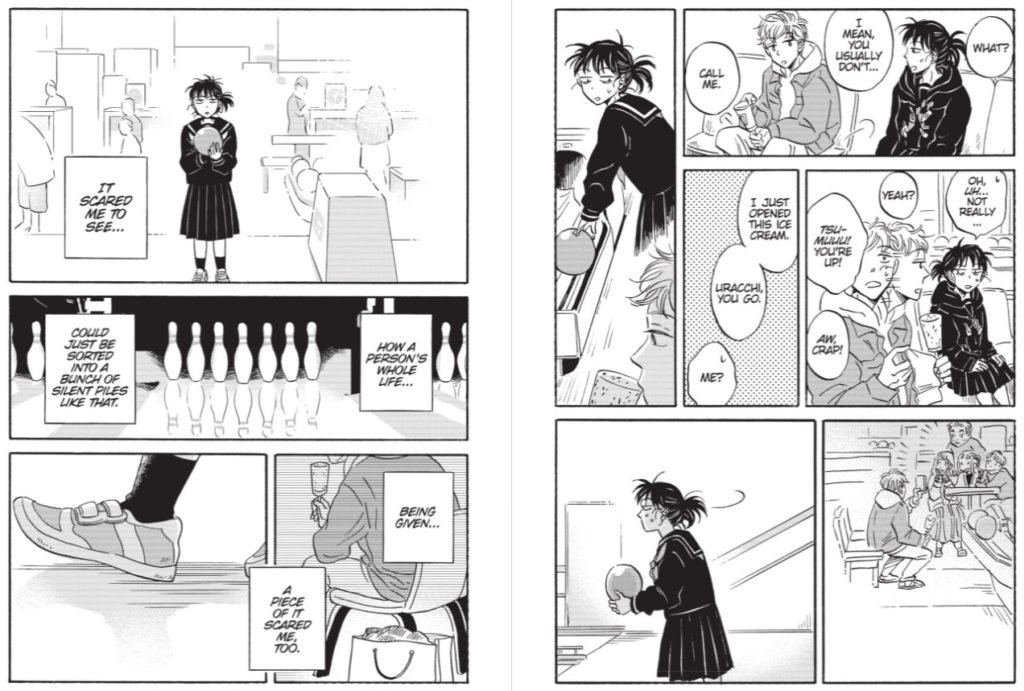
These scenes and ideas are all from volume 3, and they’re some pretty heavy foreshadowing for the rest of the series as it finishes. The future can be known, in small ways. It can be sorted, kept or thrown away, shared with friends. It’s information that our two protagonists work with, in their way. It’s so good.
29:44 We mention this a few times, but all of the scenes with Ichinoi and her friends are really lovely, and sweet.
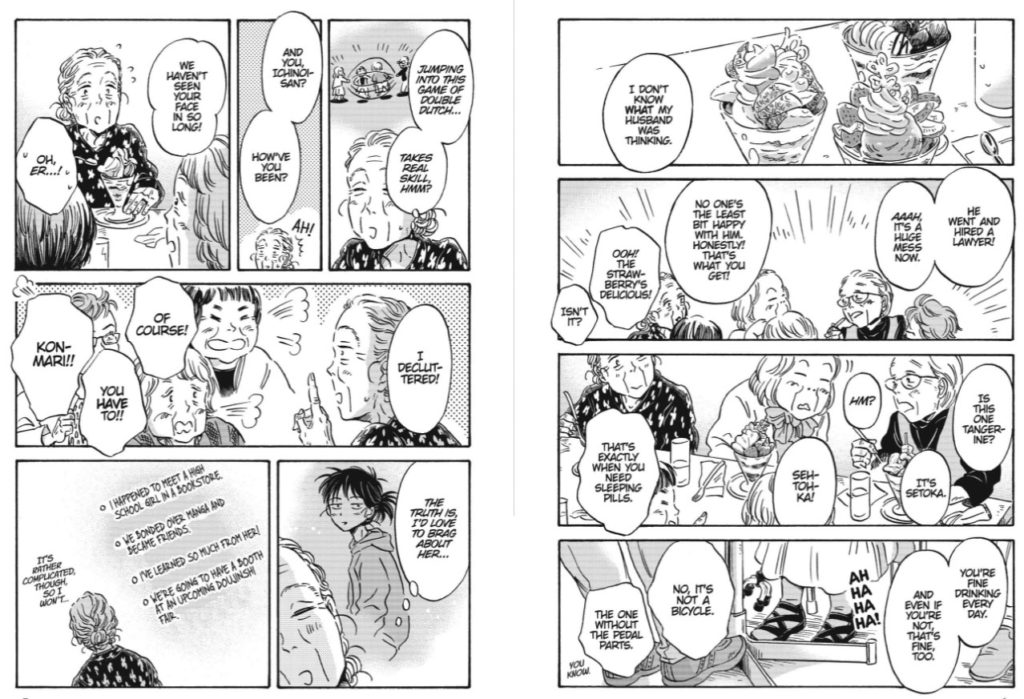
31:05 As David says, the drawing of her laying across the kitchen chairs is fantastic.
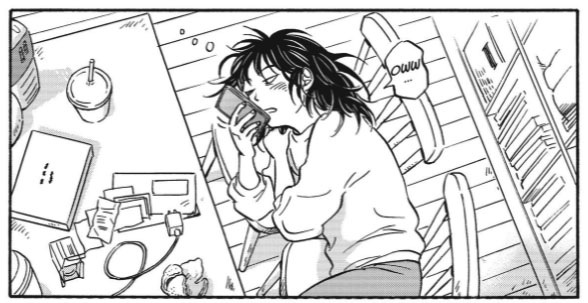
34:40 Wait, then, so does the act of reading books for the podcast contribute to ruining the books themselves? DUN DUN DUNNNNNN.
Seriously though. We’ve been getting quite a few messages lately that it’s hard to keep up with the podcast, we recommend so many books (at least 1 a week!) and some people don’t read that much, or have all kinds of other things to read. We’d much rather you listen to the podcast and enjoy the books at your own pace. I mean, no lies, we like seeing our listener count go up, but we’d rather you take the podcast, and the books that go along with it, at your own pace rather than risk burning out on everything. Manga is supposed to be fun! Well, for everyone except Chip, maybe. For Chip, reading manga is and will remain work. But this is why we take a month off at the end of every ‘season’. 😉
Also, some folks just listen to the episodes for manga they don’t care about and will never read, and those are pretty fun too, if I may be so bold. 😉
35:15 The long trip to Tokyo Big Sight is a great chapter, as are the first few chapters of volume 5, running around the show for the first time. I don’t think I’ve ever seen a comic so perfectly convey the feeling of going and exhibiting at a show like this before. Well, not since it did the same thing in volume 2 with the trip to J-Garden. Really impressive. Big shout-outs to BL Metamorphosis and Kaori Tsurutani.
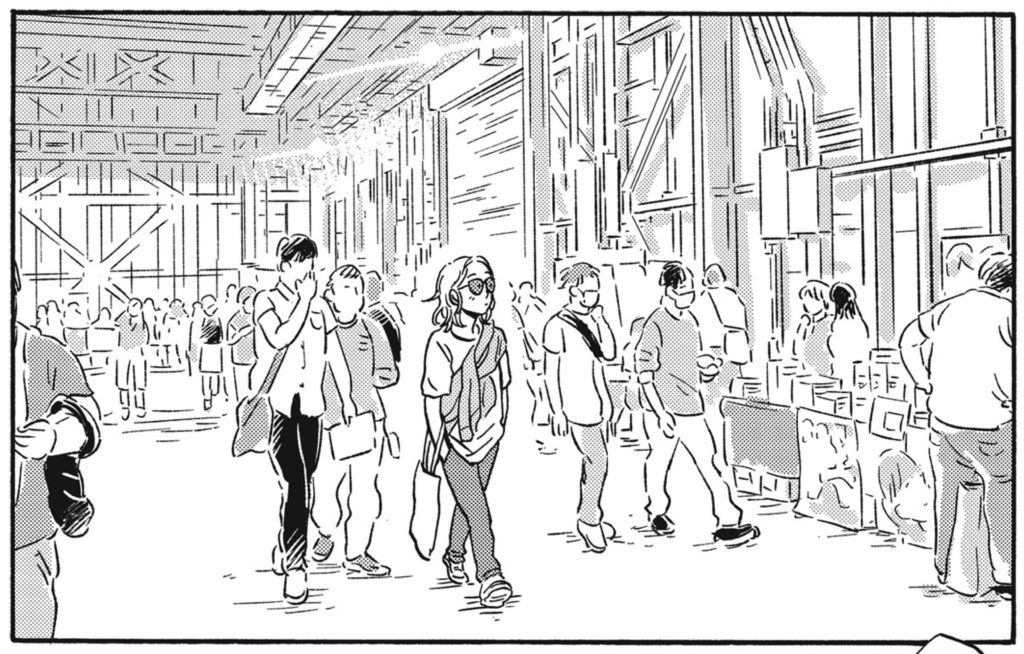
35:45 Stan Lee @ Tokyo Comic Con:
37:30 Hi, Ben!
43:15 Harold Buchholz! His entry here shows his Apathy Cat series, and it looks like he’s writing on Dark Horse’s Mystery Science Theater 3000 comic, that’s pretty cool! Anyway I brought him up because he was the first print broker I knew who solicited small-press creators to help them make low-run digital print-to-order books, pretty close to a Japanese doujinshi set-up. As I also mentioned, Prenney Printing (famous for printing Cerebus) went after that market in a big way, and I know that in the mid-2000s a number of players entered the scene doing similar stuff. A quick check reveals that Ka-Blam is still operating, doing digital print to order and small-run books. http://ka-blam.com/main/
I also mentioned that there are dozens of printers of this material in Japan. Here’s a list of preferred printers from the Comitia event, that will deliver books directly to the venue. No idea which, if any, offer services in English, but you can muddle through most of those sites with Google Chrome Auto Translate.
45:20 Here’s that guide to being an English-speaking author exhibiting at Comiket in Japan, by David’s friend Caleb Goellner. It’s really quite good!
http://www.mermaidevolution.com/2016/08/22/tabling-at-comiket-90/
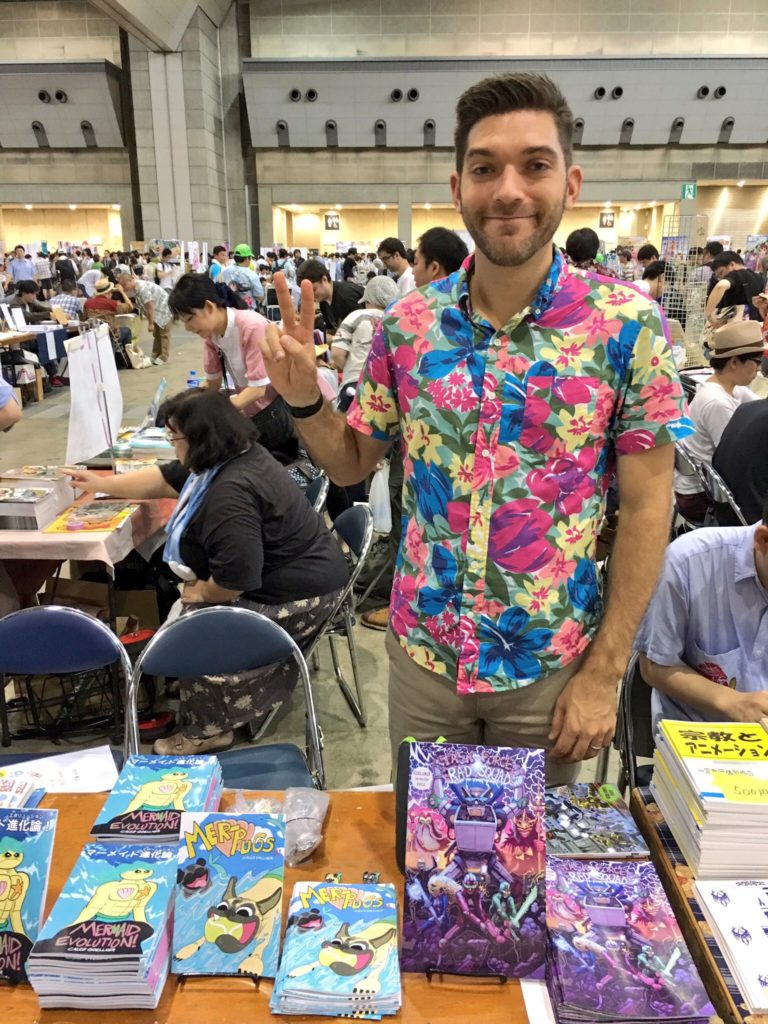
48:30 It might be a little unclear here, but David is talking about a sequence where Urara is talking to one of the fictional characters about the manga-within-a-manga, the BL manga You’re The Only One I Want To See. It’s a really lovely, slightly sad sequence, about not being able to be the person you want to be.
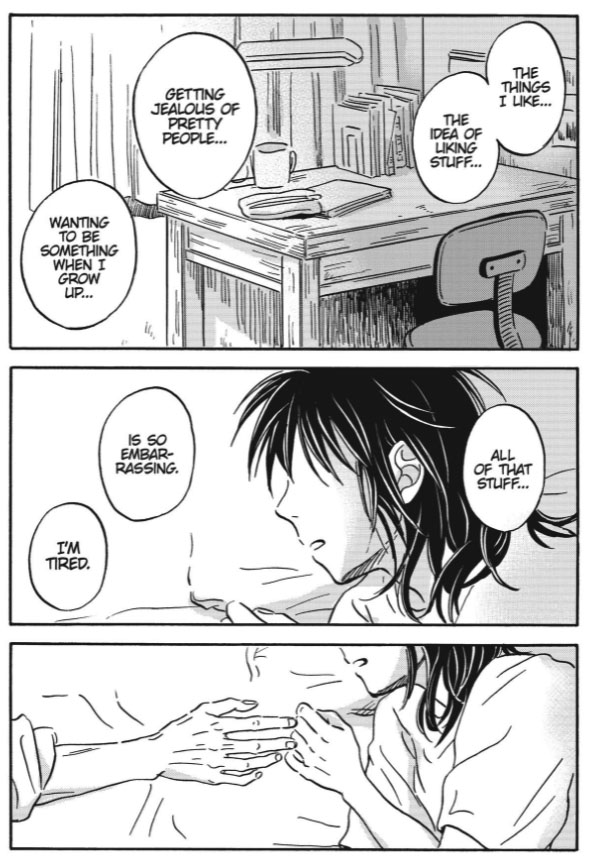
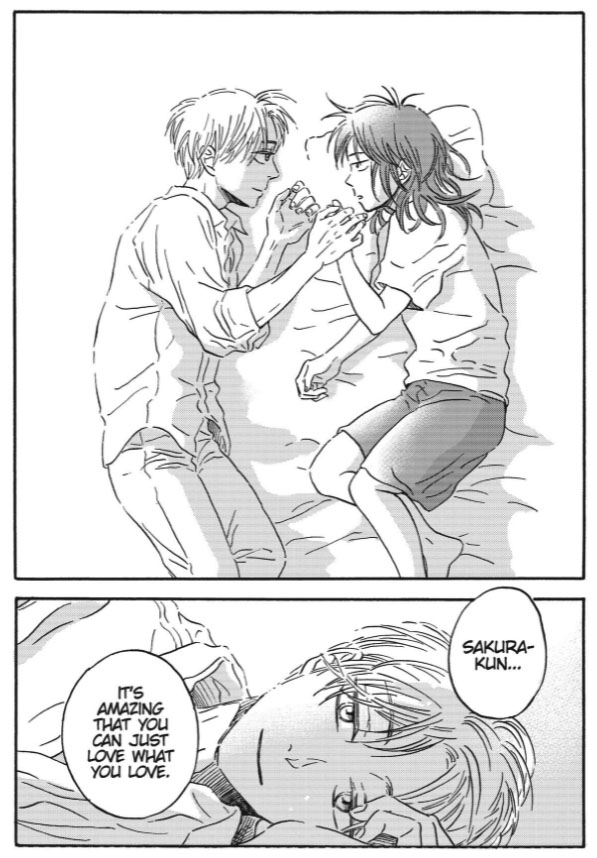
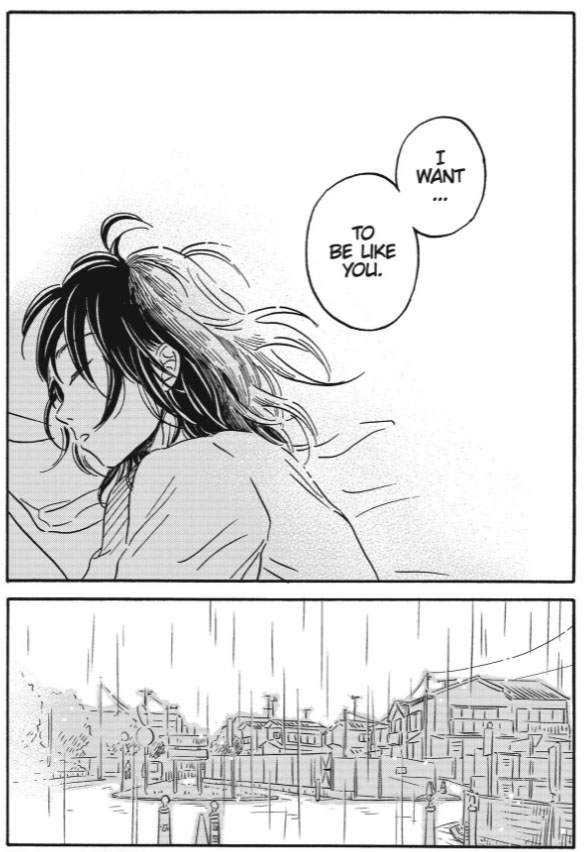
49:50 I think Deb does a great overview of BL here. For more, read the Wiki, it’s VERY DETAILED.
50:45 Yeah, I should state that this book is the most general audiences BL book that Seven Seas publishes. It’s so gentle and only references that smut exists, but doesn’t actually show it on the page.
51:44 So about that other manga about BL manga…
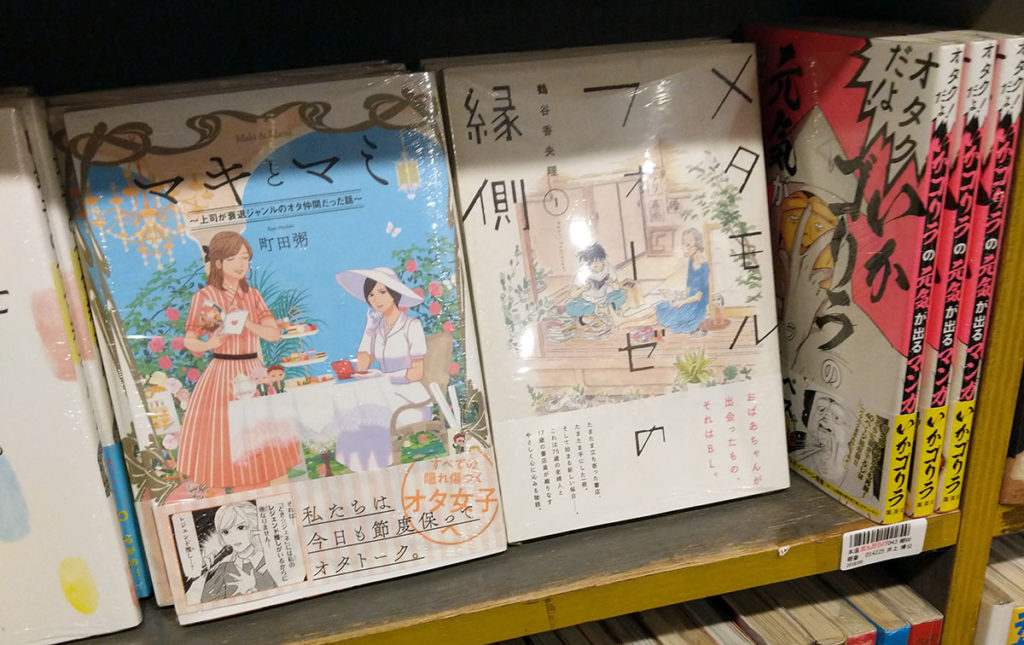
I honestly can’t believe I was able to find it in my photos folder, but that title is, in fact, Maki & Mami, by Kayu Machida. The subtitle is, roughly, two otaku ladies talking about different genres of manga and living life strongly, or something. Sorry, nihongo jozu ja nai. But yeah, not strictly about BL, but about women enjoying manga a various genres. It’s 4 volumes, no English translation, no fan translation even! It’s pretty close to an essay manga (as opposed to a more conventional narrative like Wotakoi. Anyway, I think maybe Seven Seas is your only chance to see something like that translated.
54:10 The Japanese title, Engawa no Metamorphose, Engawa being like a porch, or a veranda, attached to traditional Japanese homes. So like change on the porch, or The Veranda’s Metamorphosis.
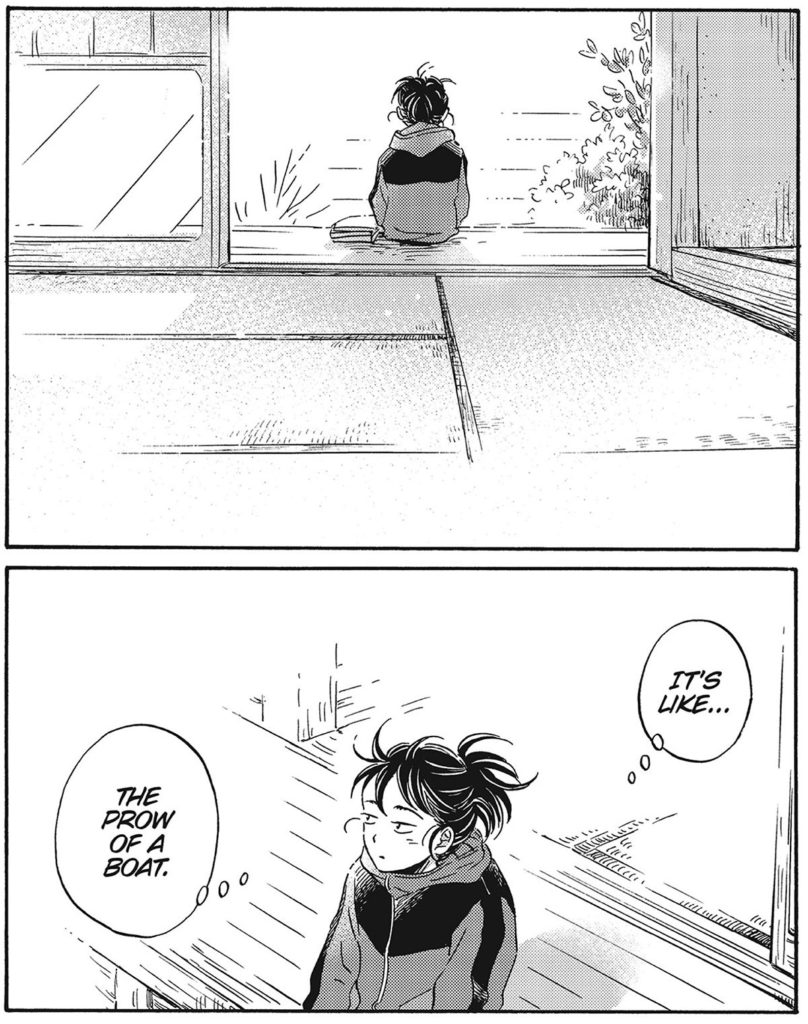
56:07 THE BREAK
56:30 It’s time for the Q&A, and this time the Q comes from our host, Chip Zdarsky?
“So is there a Comics Code Authority in Japan?”
The answer to that is essentially no, but also, it’s a self-censorship on a lot of fronts and ideas/images deemed obscene aren’t technically ‘censored’ since they’re illegal. It’s a bit complicated, but basically it’s different than here, but yes, there’s censorship and that discussion is constantly evolving. You can read the Wiki on Censorship in Japan for something that’s very technically accurate, but there’s more going on on the ground than that.
But for those that don’t know what a Comics Code Authority is, here’s a quick primer.
Japan doesn’t have a Comics Code Authority, but both Tokyo and Osaka (among other cities) have banned certain kinds of magazines and stories from being purchased by readers under 18, which means that most bookstores and convenience stores in the city won’t stock those items. But if you go to the suburbs they’re available there, and they also are sold in adults-only shops within city limits. As is the problem with all censorship, the decision on what is or isn’t illegal is entirely in the hands of the censors.
So on the nudity front, as mentioned non-sexual nudity is not a big deal in Japan, but is a huge deal in North America. Both Crayon Shin-Chan and Dragonball, which feature little kids running around with their wieners out for laughs, have come under fire from parents and pearl-clutchers on both sides of the political spectrum. That’s just the tip of the iceberg, but even that sort of incidental nudity is slowly being phased out of manga out of a fear of upsetting the Americans. :-/
As mentioned, the President of Kadokawa released a pro-censorship statement this summer. In Googling for these show notes, I was delighted to learn he was forced to apologize for those remarks! Anime News Network has the whole story.
So then we name-check a bunch of issues related to censorship around art in Japan.
First up there’s Rokudenashiko’s What is Obscenity?, which was published in English by Koyama Press in collaboration with MASSIVE. Sadly it’s out of print right now, I hope someone brings it back one day, but given that there’s no real ‘news’ with her cases in Japan it’s unlikely to return for a while.
Then I mention the case of Singaporean Gay Photographer Leslie Kee, arrested for selling photo collections at a gallery event that featured uncensored nudes. It’s pretty clear it was a sting by the police who knew what they were doing, and it’s really gross and unfortunate. So yeah, uncensored adult genitals? Japanese Police say no. Real bummer.
I also reference the Mike Diana case, which happened right here in America, and echoes what happened with a police sting on an artist.
So what I should mention here is that this is all just my experience, and there are lots (and lots!) of people living in Japan with much more experience than I have. One of the best resources to learn about how Japanese censorship and social mores interact with queer people and queer stories, is the documentary Queer Japan, now available on VOD from lots of different sources. Here’s that trailer, go seek it out and watch this!
And to find out what the hell I’m talking about when it comes to North American films, the Hayes Code, etc., I highly recommend the film The Celluloid Closet. It’s a much watch for every young queer (and everyone else should watch it too).
Finally, I have to apologize, I can’t quite find that specific BL manga with the hot monks. Maybe if Jocelyne listens this week, she’ll remember what it was and share with everyone. 🙂
1:11:22 Comiket, SF, BL, and so much more. The Yoshihiro Yonezawa Manga Museum has all the answers you need and many more. Here’s a bit of a short biography of Comiket Co-Founder Yoshihiro Yonezawa, on the website for the museum. https://www.meiji.ac.jp/manga/english/yonezawa_lib/profile/
Whew, what a episode!
1:14:10 Now it’s time for SHOUT OUTS!
Chris shouts-out this video by Dua Lipa for her song Levitating.
Deb shouts-out the new shoujo manga In The Clear Moonlit Dusk, by Mika Yamamori, published by Kodansha.
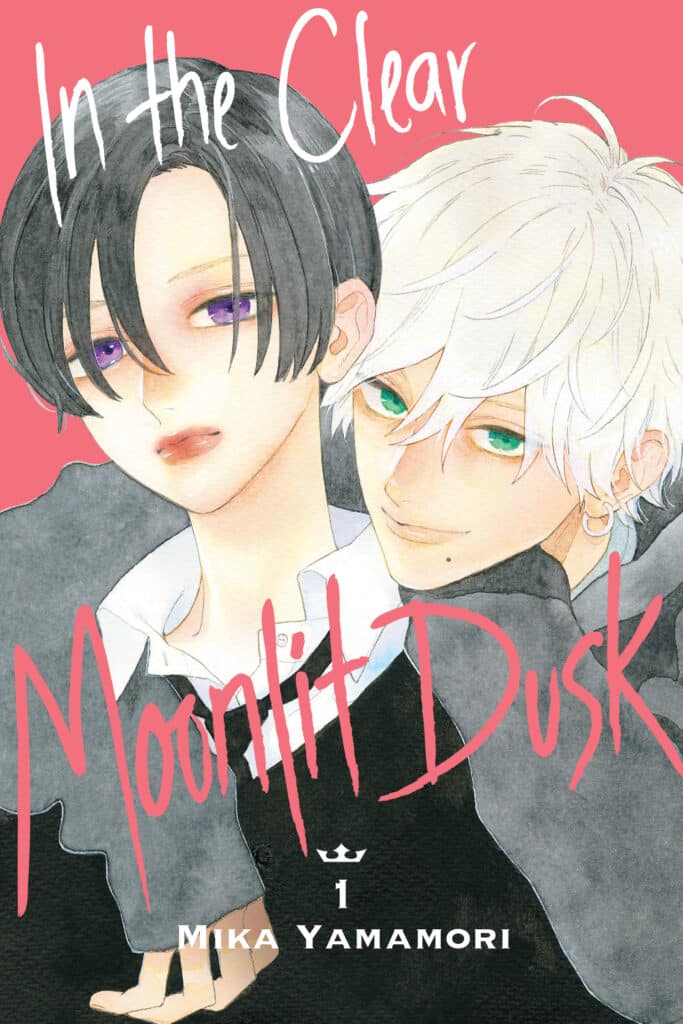
David’s Shout-Out is a challenge to our listeners! “If you had to do a BL Metamorphosis that was just as kind, but with another genre, what would you do?” Look for this question to appear on our Twitter and Instagram later this week! But feel free to answer in the comments here too.
Chip’s shout-out is the television series The Sopranos. He liked it, but, too many boobs. David adds a sub shout-out with another Gandolfini vehicle, The Drop.
We end on a joke, as all good podcasts should.
Thanks for listening!
You can find BL Metamorphosis and many of the other books mentioned above at a comic shop near you, via comicshoplocator.com. Thanks again to D.A.D.S. for their musical accompaniment this week, and we’ll see you again next time! Take care!
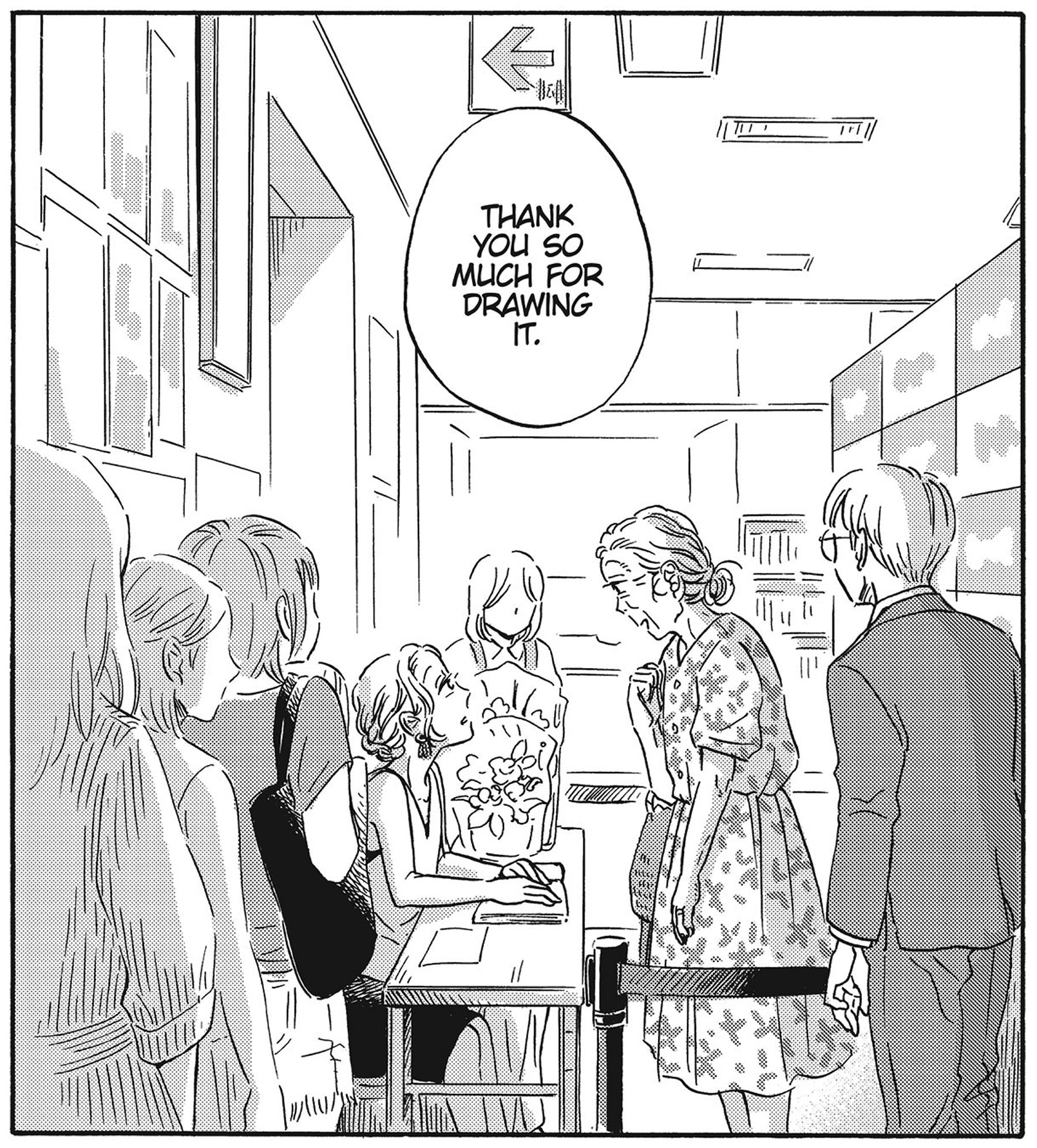
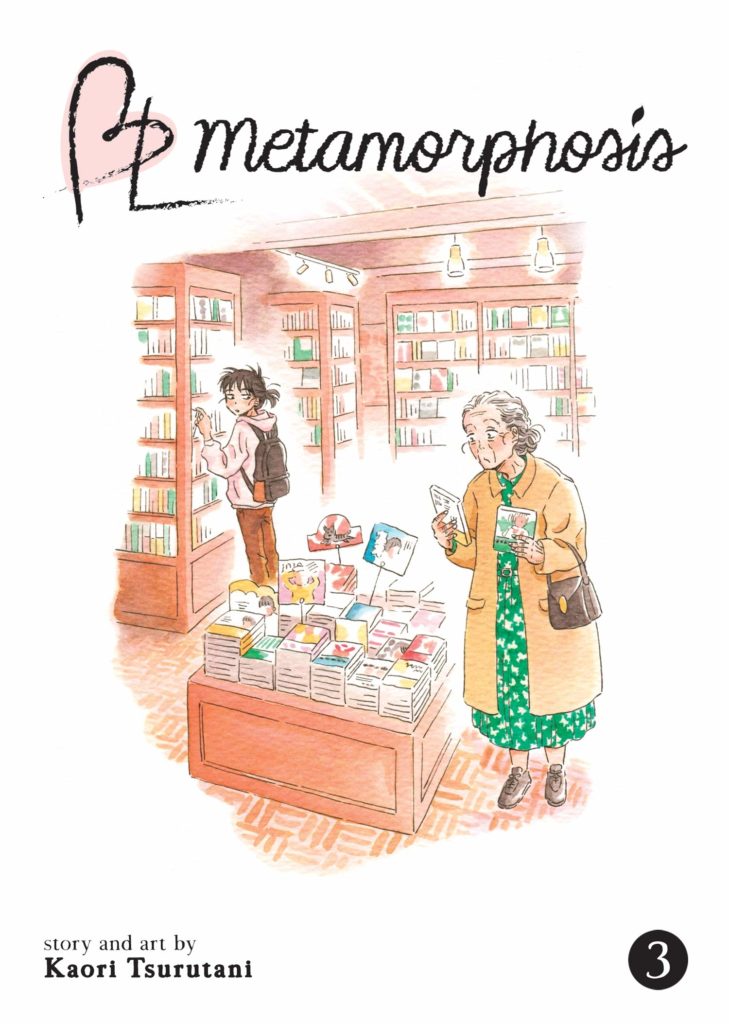
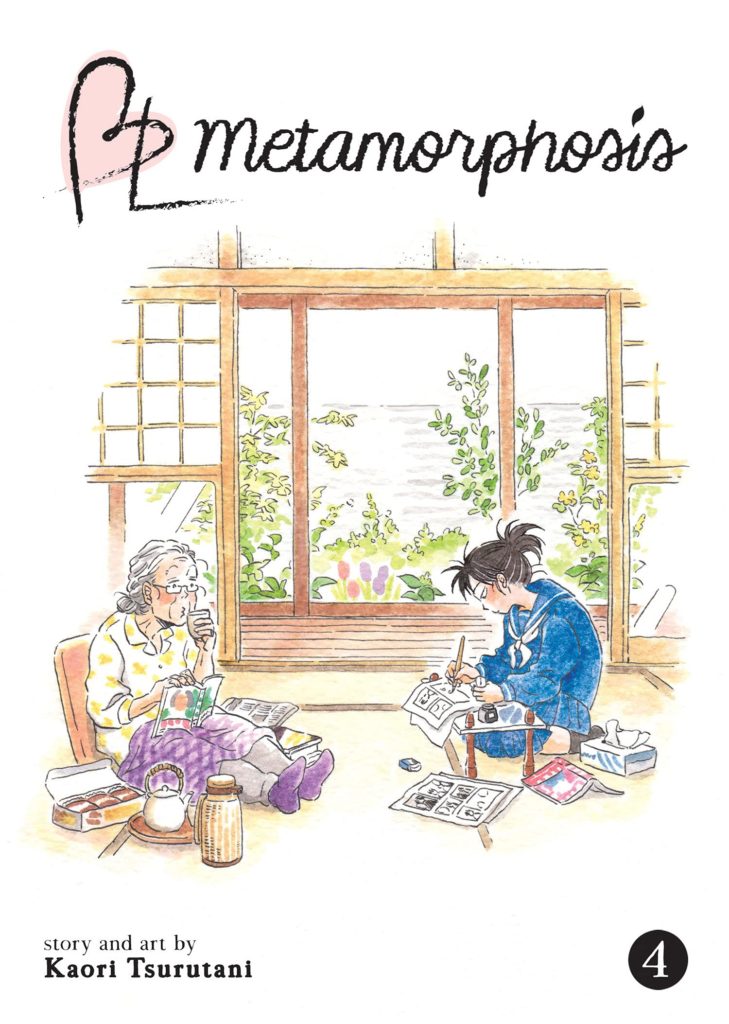
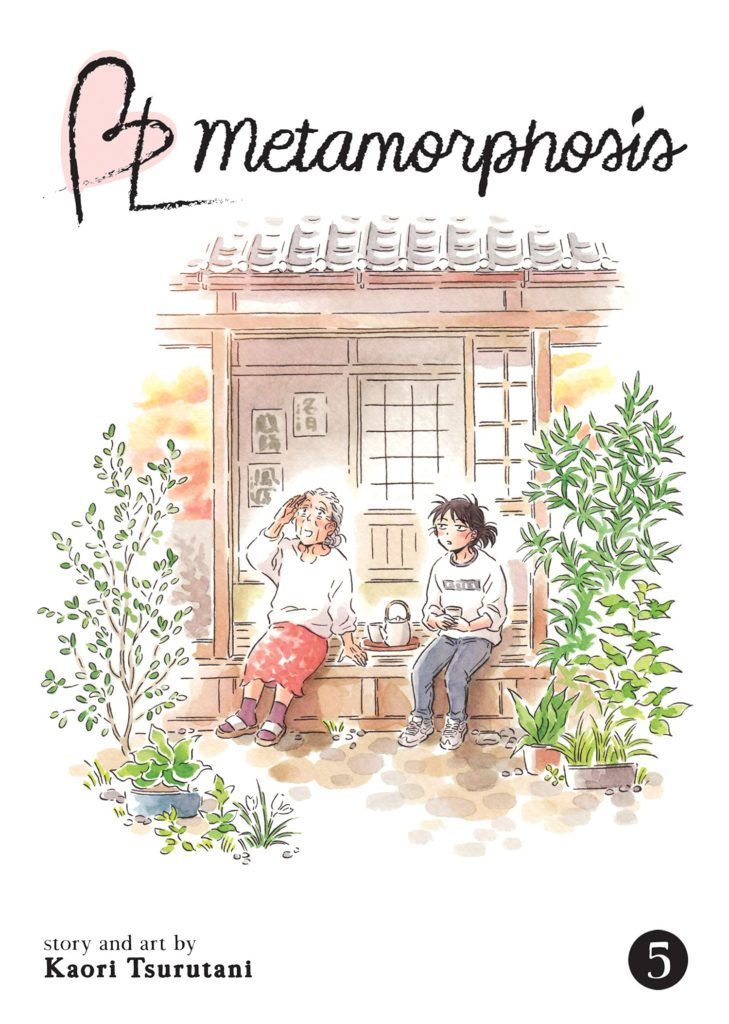
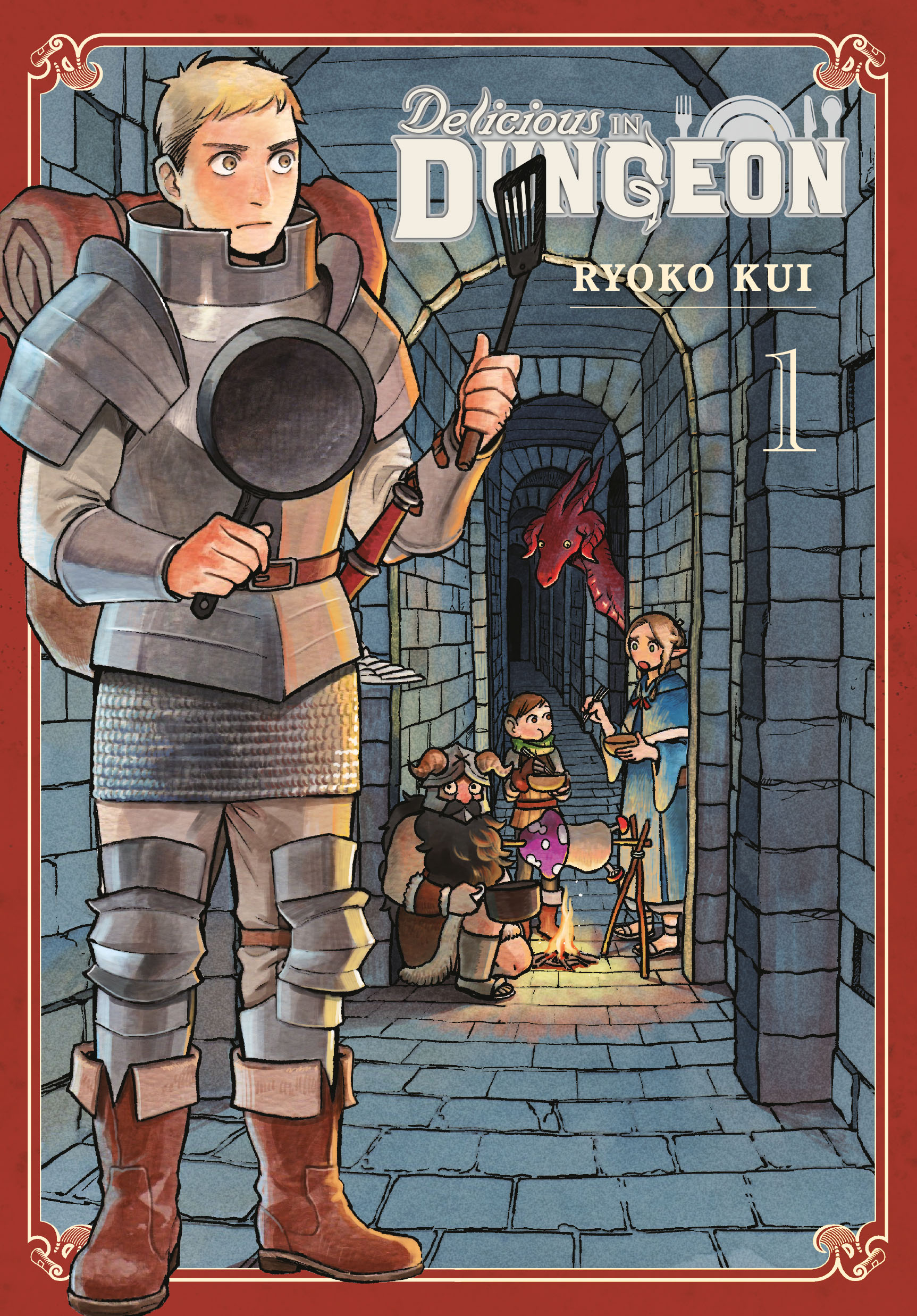
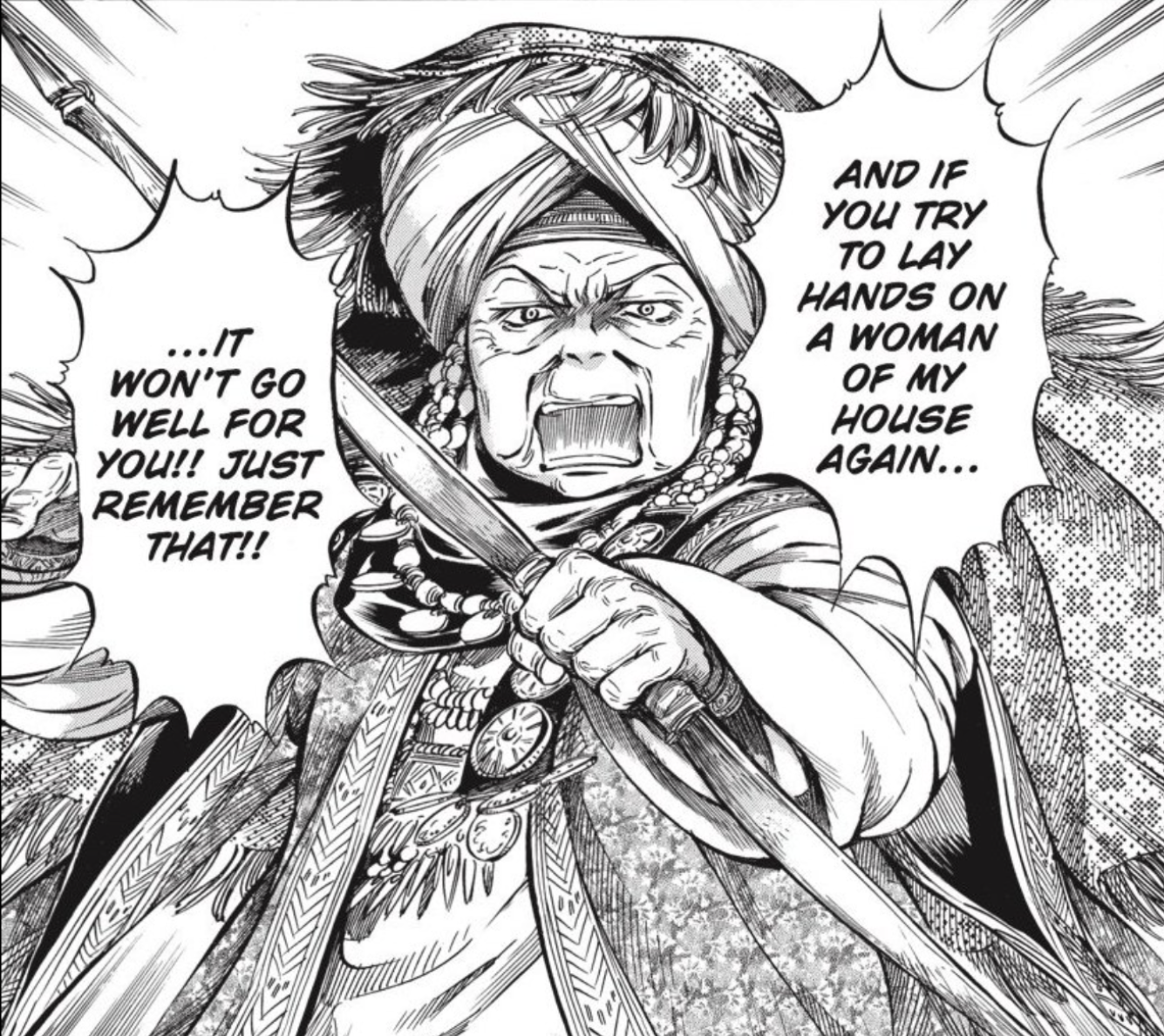
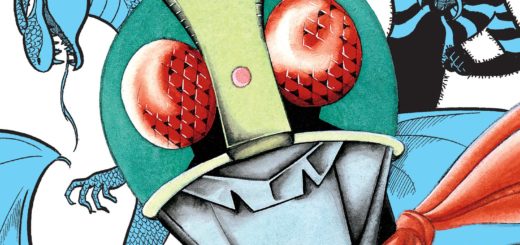
This also marks he first week I have specifically gone out and read 3 volumes of manga so that I was fully informed going into a Mangasplaining podcast. Chalk it up to Chip’s recommendation power. ^_^ I have a question at the bottom, but here are a bunch of random comments I wanted to share with you folks.
I also have sold at Comiket. My highlight was a moment when I looked up and saw a *line* of people waiting to look at our books! It was a whole trip for sure. I’m also that person who goes up to the kids selling a 100 yen copy book, buys a copy and makes them sign it. If nothing else, I hope it gives them a great story.
To add one piece to Chris’s discussion of queer content, there’s also a gap between BL (which is assumed to have a mostly straight, mostly female audience) and Yuri (which, despite almost all data we have, is assumed to have a mostly straight, mostly male audience) and Queer or LGBTQ+ content. Until relatively recently, it was rare to have queer issues or even words used in BL and Yuri. That has changed a lot over the last decade as LGBTQ+ folks in Japan are striving for more recognition and rights. Queer creators are just going ahead and creating queer content for Yuri and BL audiences both as independents online and, increasingly, in Yuri and BL publications.
As always, a delightful podcast.
****
Here is my question:
I have a question for you this week. It seems that most of you approach reading a manga from a very visual perspective – which seems obvious, as it is a visual medium. Has there been a manga or a graphic novel that captivated you because of the story or characters, despite art that wasn’t really up to the task?
Thanks for the astute comments as always, and Great question! We’ll answer it on air! 😀
It’s delightful to see y’all finish a series! Wonderful episode, once again! I’ve got some experience with the LGBT+ scene in Japan, particularly around boys’ love, so I thought I’d chime in with some perspective!
I like to say that Japan is simultaneously 15 years ahead and 15 years behind when it comes to equality. On the one hand, depicting LGBT+ characters in media has been common for decades upon decades (and centuries, even, before the Meiji restoration), boys’ love manga is enormous and visible, and hatred of LGBT+ people tends to be far less aggressive than it is in the West. On the other, gay marriage isn’t legal, and I get the impression that being LGBT+ isn’t so much “welcomed” or “accommodated”, but rather “tolerated” – and there’s certainly no shortage of LGBT+ people being ridiculed. As an example, while One Piece’s Bon Clay is a benign and perhaps even lovingly rendered “okama” character, the very same manga has a whole island populated by caricatures of queer people who are made out to be unpleasant and unaware of the concept of consent.
One thing that’s important to note about boys’ love is that it’s not by or for LGBT+ people. Of course, there are exceptions (American publishers have been quite good about picking up these exceptions), but generally, it’s written by straight people for straight people – especially the stuff that sells. In fact, I count a good number of LGBT+ peeps among my friends in Japan (primarily Tokyo), and there’s one thing they unanimously agree on: they don’t like mainstream boys’ love manga. (Opinion is more split on yuri, although it’s not necessarily positive there either.) As for why, it can be compared to, say, lesbian pornography for straight men in the West! Imbalanced power dynamics and non-consensual elements are the rule, and stories are typically written more to be saucy than to be relatable. It’s not “representation” so much as it is “fetishization”. Anecdotally, I have friends who have had to deal with overt homophobia from avid “fujoshi”. Of course, being primarily salacious and titillating isn’t bad in and of itself – it’s exciting entertainment – but I think it’s important to know that it means that these stories don’t necessarily translate into higher societal acceptance of LGBT+ people, and that they’re not necessarily “progressive” by virtue of starring gay characters. Arguably, by the nature of the stories’ content, they even paint a negative picture of gay people. That’s some context that I think we miss when boys’ love manga comes Westward: it’s lauded as progressive because in our culture, any LGBT+ visibility whatsoever is a statement – whereas the context in which they were created is very different.
This isn’t to discount boys’ love manga entirely, of course – it’s a gigantic culture with a strong community, and in the context of “by straight women for straight women” (reductively speaking, of course), it’s clearly striking a chord – and has played an indelible role in making a space for women in manga. And hey, hopefully we’ll see this visibility factor into bettering the standard of living of LGBT+ people in Japan in the future as well.
I look forward to hearing what y’all have to say about the history of boys’ love on the Moto Hagio episode! Oh, and I can’t wait for CITY – that’s one of my favorite manga in recent years! Toodeloo!
Thanks for your insight! It’s tough to get into all of this, I largely agree with your take, without drowning the rest of the episode. But I think if we ever do a BL Manga for reals, we’ll definitely dig in in a bigger way.
I think my favourite summation (hi, it’s Chris) of the phenomenon you describe comes from a Fumi Yoshinaga manga. It’s autobio, she’s sitting down with a gay friend, and has a dawning-horror type of realization that she’s made manga about ‘gay men’ (i.e.: BL) for years and years and never actually taken the time to make it real or authentic and gets super upset. Her gay friend just sort of laughs. I can’t remember which short story collection it’s in sadly, but it’s a personal fav, particularly as she goes on to make “What Did You Eat Yesterday” a little while later. Lol.
It’s from Not Love But Delicious Food Makes Me So Happy! chapter 4 (foodie short story autobiography) On the way to finding it, I read through All My Darling Daughters. Wow. Fumi Yoshinaga for the laughs and the gut punches. Thank you, Mangasplaining, for taking me down memory lane as a manga detective once again! : D
This is in response to “If you had to do a BL Metamorphosis that was just as kind, but with another genre, what would you do?” I would take this in the direction of sports, and make it a martial arts comic. My personal experience is with the Chinese martial art of tai qi, so I’d probably write about that instead of Japanese martial arts. Tai qi has had a positive impact on my own life, and I’ve read/heard numerous stories from other people on how it’s had a positive impact on their lives as well.
After seeing the question on Twitter, I see that I misinterpreted what it was actually asking. In that case, apologies for the spam! It’s a good question, and I look forward to seeing what others post in response. 🙂
Great episode, great show notes, and great comments! Also glad you got to complete a series! (I supposed 7 Billion Needles was the first, if I remember correctly.)
I don’t have anything more I could contribute, but I think what tied the show together for me was all of you regaling us with your stories of working or attending conventions. I really like when you use the work you’re discussing to springboard into a conversation about your personal experiences. I think that’s part of where the real value in are lies.
Samuel and Erica brought up some good points about portrayal of LGBTQ+ and the actual acceptance of it. I remember when I was first in Japan how the number of out celebrities was surprising to me, especially so because the U.S. was losing its collective mind about Ellen DeGeneres coming out. I realized though, over time and as my Japanese improved, these LGBTQ+ celebrities were never treated like their cis counterparts. As rude as it is, the go to interview questions are about inquiring about the celeb’s love life, even if they know those celebs’ agencies prevent them from discussing that topic. But with, for example, the gay celebrities, that subject was never broached. It’s almost as if they were allowed to be gay as long as they don’t draw attention to it. And then there were the jokes at their expense, which, unfortunately, still happens. So, by U.S. standards at the time, Japanese TV was ultra progressive–shockingly so. But upon closer examination you realized it wasn’t really, and barely paid lip service to the lives, loves, and concerns they had.
Sorry, I know you said you’d discuss this down the road. Still a great episode!
Hey Miguel, thanks so much for these wonderful comments, we really appreciate them. There’s so much to say about how queer people are portrayed and treated in Japan, and even with lots of firsthand knowledge I (hi it’s Christopher) don’t think I should be the person to be going on about them, y’know? Especially when something like the Queer Japan documentary exists, and does a great job of letting Queer people speak with their own voices. But I’m glad I could add a little insight, at least. 🙂
A book on BL I would highly recommend is :
McLelland, Mark, Nagaike Kazumi, Suganuma Katsuhiko and James Welker, eds
Boys Love Manga and Beyond: History, Culture, and Community in Japan
Jackson: University Press of Mississippi, 2015
https://www.upress.state.ms.us/Books/B/Boys-Love-Manga-and-Beyond
The book includes what is likly the most complete history of BL written to date, and that includes works done in Japanese.
Great recommendation, thanks Gilles!